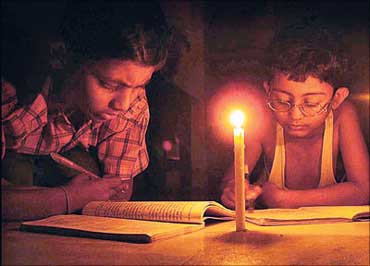LONDON (Reuters) – A move to natural gas and renewable energy will be a global long-term trend, even though technology such as wind power is currently more costly than fossil fuels and nuclear, a General Electric executive said. GE is well placed to estimate relative costs as one of the world’s biggest suppliers of all major power technologies.

“GE believes we are seeing a megatrend in natural gas and renewables. These two trends will be long-standing ones, which we will be investing in,” Paul Browning, vice president of thermal products for GE’s power and water division, told Reuters in an interview on Friday.
“In the future, we will need a bit of everything, but gas is certainly going to be an advantaged fuel because unconventional (shale) gas is changing the dynamics.”
The International Energy Agency said this week that rising gas supplies from unconventional sources could encourage demand to rise to levels exceeding coal by 2030. However, coal is the cheapest form of power generation of all, a fact borne out by energy statistics from oil major BP, which show that world coal consumption last year reached a new record, with 50 percent more burned than in 2000.
The U.N. climate science panel, the IPCC, said in 2007 that global greenhouse gases must peak by 2015 to hit safer climate change targets.
But soaring coal demand instead pushed up Chinese CO2 emissions by more than 10 percent last year, according to BP.
DRIVING DOWN COSTS
While the cost of wind power is falling, making it a long-term prospect for investing, it still lags gas, coal and nuclear power, Browning said.
The cost of generating electricity includes the up-front capital cost of building a power plant plus ongoing fuel costs. Those costs can be combined in a term called the levelized cost.
The levelized cost of onshore wind was around 9-10 U.S. cents per kilowatt hour (KWh), said Browning, or about double the cost of the cheapest form of coal-fired power generation at 5 cents, and also above 6 cents for U.S. natural gas and 7-8 cents for nuclear.
He saw the levelized cost of solar PV at about 15 cents.
GE wants to drive down the costs of technologies such as solar thermal and integrated gasification combined cycle (IGCC) coal technology, but natural gas will be in abundant supply for at least the next 25 years, making it the cheapest energy source.
This week, Turkish private equity firm MetCap Energy Investments said it would use GE technology to build a $500 million power plant in Turkey that will use both gas and renewable energy.
The plant will integrate a gas turbine, a steam turbine, 22 MW of GE wind turbines and 50 MW of solar thermal technology.
“Stand-alone concentrated solar thermal is fairly expensive right now — in the 15-20 cents per KWh range,” Browning said.
“But when you integrate solar thermal with a combined cycle power plant, the infrastructure is already there. That makes integrated solar combined cycle costs competitive with photovoltaic (PV) solar, and they start to get closer to (onshore) wind,” he added.
GE is also aiming to drive down the cost of IGCC technology, which burns coal after turning it into gas, improving power conversion efficiency and thereby reducing carbon dioxide emissions.
IGCC levelized costs are currently around 15 cents/KWh, but GE hopes to lower the cost to 8-9 cents, partly through a joint venture with China’s Shenhua Group Corporation to develop the technology.
 Follow
Follow
